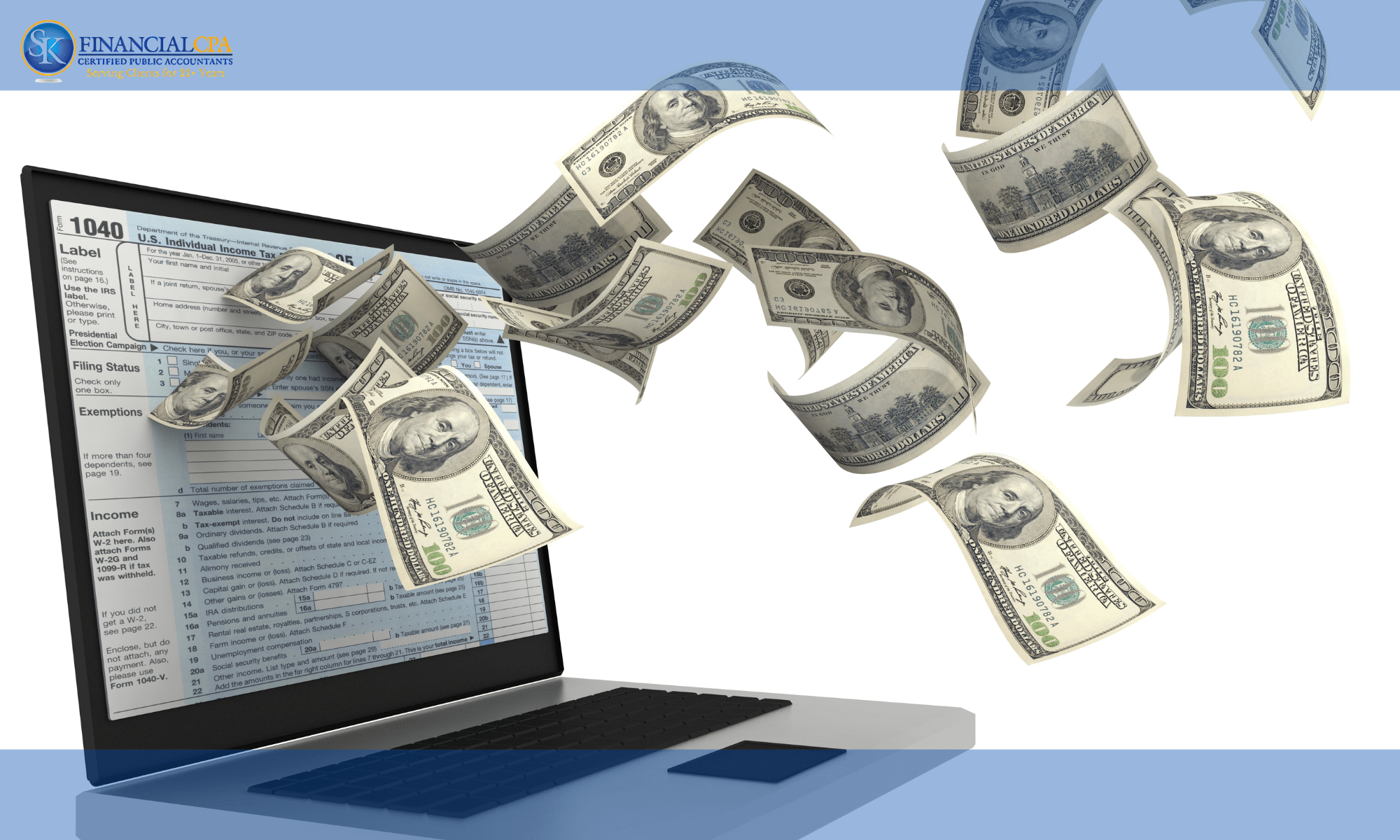
How to Check Tax Refund Status
The arrival of tax season can evoke a mix of emotions, from the dread of navigating complex tax forms to the hopeful anticipation of a substantial tax refund. This refund often represents more than just a return of overpaid taxes; it symbolizes an opportunity for financial growth, an emergency fund, or a means to afford something special. However, once the tax return is filed, the waiting game begins, shrouded in uncertainty about the status of one's tax refund. Understanding and tracking your tax refund status becomes a crucial endeavor, serving not just as a tool for financial planning but as a beacon of financial prudence. This guide aims to demystify the complexities of checking your tax refund status, offering insights and methodologies to ensure a streamlined process that enhances your financial well-being.
How to Check Your Federal Tax Refund Status
Go to the IRS’ Where’s My Refund tool and enter this information:
Your Social Security number
How you filed your taxes (like single, married, etc.)
The exact refund amount you see on your tax return
Just punch in that information, and you're good to go! It'll give you the latest on your refund status in no time
How to Check Your States Tax Refund Status
Reach out to your state's taxation department for guidance on how to track the status of your state tax refund
-
Tax Preparation: You or a tax professional prepare your tax return, which includes details about your income, deductions, credits, and other relevant financial information for the tax year.
-
Filing: You submit your tax return to the appropriate tax authority, such as the IRS for federal taxes or your state's Department of Revenue for state taxes. This can usually be done electronically or by mail.
-
Processing: The tax authority processes your return, verifying the information provided and calculating your tax liability or refund based on the details you've provided.
-
Assessment: The tax authority assesses your return, ensuring that all calculations are accurate and that you've complied with tax laws and regulations.
-
Refund or Payment: If you've overpaid your taxes throughout the year, either through employer withholding or estimated tax payments, you're entitled to a refund. The tax authority issues your refund either via direct deposit or paper check. Conversely, if you owe taxes, you'll need to make a payment to settle your tax liability.
-
Timing: Refund processing times vary depending on factors such as filing method, accuracy of information, and the volume of returns being processed. Typically, refunds are issued within a few weeks for electronically filed returns, while paper returns may take longer to process.
-
Status Checking: You can track the status of your refund using tools provided by the tax authority. This allows you to see when your return has been received, processed, and when your refund is scheduled to be issued.
Refund timeline
The processing time for your refund generally varies:
- E-filed returns typically take up to 21 days.
- Amended returns and mailed returns may require 4 weeks or more.
- If your return needs corrections or additional review, it may take longer.
Your refund timing might be affected if you:
- Claim the Earned Income Tax Credit or Child Tax Credit.
- Submit a paper return.
- File an amended return.
- Request injured spouse relief.
- File a Form 1040-NR, Nonresident Alien Income Tax Return.
- Encounter errors on your return.
Check the tax refund Status
The process of checking your tax refund status, while seemingly straightforward, benefits greatly from a step-by-step approach that ensures accuracy and efficiency:
Initial Preparations:
Embarking on the quest to ascertain your tax refund status necessitates a certain level of preparedness. Arm yourself with your Social Security number, a cornerstone of your tax identity; your tax filing status, which reflects your household situation; and the precise refund amount claimed. This trifecta of information is your key to unlocking the gateway to your tax refund status.
Navigating the Digital Landscape:
The digital age has bestowed upon us the convenience of online platforms for a myriad of purposes, including checking your tax refund status. For U.S. taxpayers, the IRS's "Where’s My Refund?" tool stands as a testament to this technological evolution. Accessible through the IRS website, this tool is designed with user-friendliness in mind, guiding taxpayers through the process with ease and efficiency.
Entering the portal:
With your essential information in hand, you're ready to penetrate the digital portal to your tax refund status. Carefully input your Social Security number, select your filing status from the drop-down menu, and enter the exact refund amount you're expecting. This step, while simple, is fraught with the potential for errors if not approached with precision.
The Revelation:
The culmination of your efforts is the revelation of your tax refund status. The system, upon processing your inputs, will unveil the current stage of your tax refund be it received, under processing, or dispatched. This instant feedback loop provides not only peace of mind but also valuable insights into the internal workings of the tax processing machinery.
Optimizing the Tax Refund Retrieval Process
Achieving a frictionless tax refund process is a feat that requires strategic planning and meticulous attention to detail. Consider the following recommendations to enhance the efficiency of your tax refund retrieval:
-
Advantages of Electronic Filing:
The digital revolution has transformed the way we file taxes, offering a faster, more reliable method through electronic filing. E-filing not only expedites the processing of your tax return but also paves the way for a quicker tax refund turnaround.
-
The Merits of Direct Deposit:
Electing to receive your tax refund via direct deposit is a decision that pays dividends in time saved. This method bypasses the logistical delays associated with traditional mail, ensuring that your refund is deposited directly into your bank account with minimal waiting.
-
The Crucial Role of Accuracy:
The path to a smooth tax refund process is littered with potential pitfalls in the form of inaccuracies on your tax return. Even minor errors can lead to processing delays or audits. Diligently review every detail of your return, from income statements to deductions, to ensure complete accuracy.
-
Embracing Patience:
The journey to receiving your tax refund is a marathon, not a sprint. The IRS and tax authorities worldwide operate on timelines that can vary greatly depending on a multitude of factors. Regularly check your tax refund status for updates, but temper your expectations with the understanding that processing times can fluctuate.
Conclusion
The pursuit of one's tax refund is a journey that encapsulates more than just the anticipation of financial gain; it embodies a deeper understanding and engagement with one’s financial health. In an era where financial literacy is paramount, mastering the art of tracking your tax refund status stands as a testament to responsible financial stewardship. It equips taxpayers with the knowledge and tools necessary to navigate the complexities of tax season with confidence and foresight.
The path to securing your tax refund, while marked by potential delays and hurdles, also offers an opportunity for growth and learning. By embracing the principles of preparation, accuracy, and patience, taxpayers can transform the tax refund process from a source of stress into an empowering component of their broader financial strategy. The act of tracking your tax refund status thus transcends its immediate practical benefits, fostering a culture of proactive financial management and resilience.
The anticipation of a tax refund can serve as a catalyst for engaging more deeply with one's financial landscape. Through diligent tracking of your tax refund status, employing strategic measures to ensure efficiency, and adopting a mindset of patience and precision, you can navigate the tax season with minimal friction and maximum benefit. Remember, the journey to understanding and managing your tax refund status is not just about the destination the funds you receive but about cultivating a more informed, proactive approach to your financial well-being. Let this tax season be not just a time of waiting but a time of valuable financial reflection and action.
FAQs
1. How can I check my tax refund status?
To check your tax refund status, visit the official IRS website and use the "Where's My Refund?" tool. You'll need your Social Security number, your filing status, and the exact amount of the refund you're expecting. This tool will provide you with the most up-to-date information on your tax refund status.
2. How long does it take to receive my tax refund status update?
After you file your tax return, it typically takes about 24 hours for an e-filed return or 4 weeks for a mailed paper return before your tax refund status becomes available on the IRS's "Where's My Refund?" tool. Remember, the tool updates once every 24 hours, usually overnight, so you only need to check once a day.
3. What does it mean if my tax refund status is "processing"?
If your tax refund status is "processing," it means the IRS has received your tax return and is currently reviewing it. This status indicates that your refund has not yet been approved or sent. It's normal for your status to be "processing" for a while as the IRS works through returns.
4. Why hasn't my tax refund status been updated for several days?
It's not uncommon for your tax refund status to remain unchanged for several days or even longer. This can happen due to various reasons, including high volumes of returns being processed or additional reviews needed for your return. If your status hasn't updated for several weeks, you may want to contact the IRS for more information.
5. Can calling the IRS give me more information about my tax refund status than the online tool?
Generally, the IRS's "Where's My Refund?" online tool provides the same information that you would receive if you called the IRS. The tool is the quickest and easiest way to check your tax refund status. IRS representatives will only be able to provide additional information if your tax refund status has been "Processing" for more than 21 days for an e-filed return or more than 6 weeks for a mailed return.
6. What should I do if my tax refund status says "Refund Sent" but I haven't received it?
If your tax refund status indicates "Refund Sent" but you haven't received your refund, wait for 5 days if you opted for direct deposit or several weeks for a check by mail. If the time has passed and you still haven't received your refund, you can request a refund trace to track down your refund. Instructions for starting a refund trace are available on the IRS website.
Follow SKFinancial on Facebook / Twitter / Linkedin / Youtube for updates.








